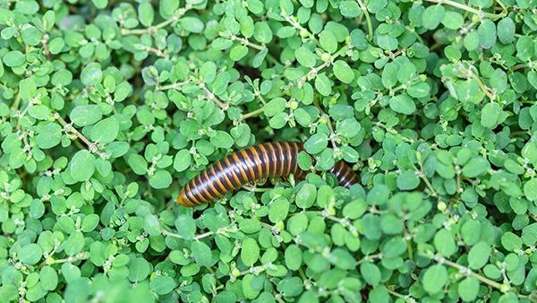You know those creepy crawling things that have 'billions' of legs (that's what it seems like anyway)? Well, those are what you would call millipedes. Often confused with centipedes, millipede legs are usually two per body segment; nonetheless, they're both equally gross to most.
Millipedes aren't harmful to humans. They do not feed on buildings, structures, or furnishings, nor do they bite or sting. Regardless, having them in your garden can be a complete nightmare, especially if you're seeing large groups of them. So, if your garden provides these things they like, which it probably does, you need to call in Houston pest control experts to rid your garden of these pests.
The Life Cycle Of Common Millipedes
A millipede can live from seven to ten years. After mating, most species lay 20 to 30 millipede eggs, while some give birth to live young. Female millipedes burrow in warm soil where they lay their eggs. The eggs hatch into legless larvae. During their first molting, millipedes develop legs and continue to develop more each time they molt. After molting, they eat their old exoskeleton.
When male millipedes court females for mating, they will walk on the female's back, give her a relaxing massage, then produce a calming sound to arouse the female. If the female is uninterested, she will usually coil up to prevent the male from transferring sperm. Millipedes also curl their body into a tight spiral in times of danger, exposing the hardened plates while protecting the soft underside. Another reason to find a millipede curled up is that it is dead.
The Good And The Bad Of Millipedes In The Garden.
First and foremost, while garden millipedes are docile creatures, you still should not pick them up with bare hands if you wish to move them away. Many of them have a defensive secretion that can cause chemical burns on your skin. While this reaction is generally mild, it's often powerful enough to cause temporary skin discoloration, itching, and blisters. Because some millipede secretions are more powerful than others, you should consider all millipedes as potentially dangerous.
Aside from their possible inconvenience to your plants, millipedes are essential for soil health. They release processed organic matter from their hind ends and act as decomposers to help return nutrients to the soil.
When their numbers build, they may feed on living plants, so too many millipedes in the garden can be trouble, but they do play an important role in compost piles. By breaking down organic matter and creating tunnels through which microbes can readily move around, aiding the piles' ability to enrich the soil, they help suppress plant diseases and, ironically, pests!
Four Naturally Effective Millipede Prevention Tips
The key to millipede prevention is first taking care of your millipede problem. Once you've had our millipede pest control, you can then implement these prevention tips.
- Keep plants no wetter than necessary for optimal health.
- Keep plant decay to a minimum.
- Place compost pile as far away from the garden as possible to attract millipedes there instead of your garden.
- Keep lawn cut.
By regularly implementing these prevention habits in your yard, you'll be on your way to a millipede-free garden.
How Professional Pest Control Helps Keep The Millipedes Away
Regardless of the type of garden you have (vegetable, flower, etc.), professional pest control will always be the right solution to rid your home of such pests. Not only are they a sight to look at, but when they show up in your garden in numbers, they can really damage your garden. At All-Safe Pest & Termite, we know exactly how to handle these multi-legged pests and get them out of your garden through our eco-friendly solutions. Give us a call today!

